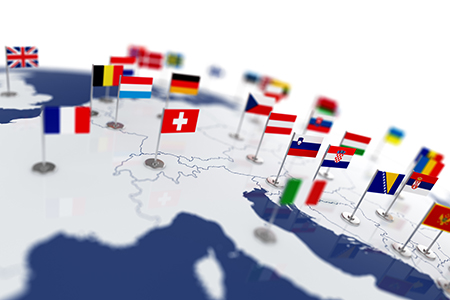How to export to Europe?
November 8, 2017Exporting to Europe can be a great way to expand your business and reach a larger market. Here are a few tips for successfully exporting to Europe:
Research the European market: Before you begin exporting, it is important to research the European market to understand the demand for your products, as well as any cultural, legal, or regulatory differences that may affect your business.
Find the right partners: Identify potential distributors, agents, or other partners in the European market who can help you navigate the local business landscape and connect you with potential customers.
Understand European regulations: Exporting to Europe requires compliance with a variety of regulations, including tariffs, customs procedures, and product safety standards. Make sure you understand these regulations and have the necessary documentation in place.
Invest in translation and localization: Consider investing in translation and localization services to ensure that your product descriptions, packaging, and marketing materials are appropriate for the European market.
Get the right certifications: Some products may require specific certifications in order to be sold in Europe, such as CE marking for certain types of products.
Develop a marketing strategy: Develop a marketing strategy that takes into account the cultural, legal, and regulatory differences of the European market, and that is tailored to the specific needs of your target audience.
Utilize e-commerce platforms: Utilize e-commerce platforms such as Amazon, Etsy, or Alibaba to reach a larger audience and increase your visibility in the European market.
Attend trade shows and networking events: Attend trade shows and networking events in Europe to meet potential customers and build relationships with other businesses in your industry.Understand European VAT and taxes: European countries have their own VAT (Value Added Tax) and tax regulations. Make sure you understand the VAT and tax regulations of the countries you are exporting to and how they will affect your business.
Find the right freight forwarder: Finding the right freight forwarder can be crucial for exporting to Europe. Look for a freight forwarder with experience in exporting to Europe and that can help you navigate the complex shipping regulations and procedures.
Create a detailed business plan: Creating a detailed business plan that outlines your goals, target market, and strategies will help you stay focused and on track as you enter the European market.
Be aware of cultural differences: Europe is a diverse continent, with many different cultures and customs. Be aware of cultural differences and how they might affect your business. For example, in some countries, punctuality is highly valued, while in others, a more relaxed approach to time is preferred.
Use online marketplaces: Utilize online marketplaces such as Amazon, Etsy, or Alibaba to reach a larger audience and increase your visibility in the European market. These marketplaces can help you reach a larger audience and increase your visibility in the European market.
Consider hiring a consultant: Consider hiring a consultant who has experience in exporting to Europe. They can help you navigate the legal and regulatory landscape and provide valuable advice on how to enter the European market.
Plan for currency fluctuations: Europe is made up of different countries with different currencies. Currency fluctuations can have a significant impact on your business, so be sure to plan for them and consider hedging options.
By following these tips, you can successfully export to Europe and expand your business. Remember that exporting to a new market takes time and effort, but with the right preparation and strategy, you can achieve success.

